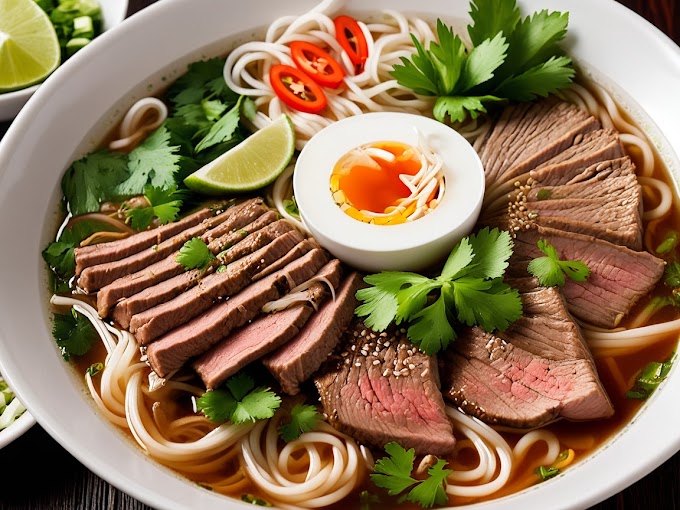Moroccan Lamb Tagine
Introduction
Moroccan Lamb Tagine is a beautifully spiced, aromatic dish that combines tender lamb with an array of warm spices, sweet dried fruits, and tangy preserved lemons. Slow-cooked for hours, this dish has layers of flavors that deepen as it cooks. The traditional method uses a tagine pot, which allows steam to circulate, tenderizing the lamb and blending the spices. However, a heavy pot or Dutch oven also produces fantastic results. Let’s explore this North African classic and learn how to create an unforgettable meal.
Ingredients (Serves 4–6)
For the Marinade
- 2 pounds lamb shoulder or leg, cut into 1.5-inch cubes
- 1 teaspoon ground cumin
- 1 teaspoon ground coriander
- 1 teaspoon ground cinnamon
- 1 teaspoon ground turmeric
- 1/2 teaspoon ground ginger
- 1/2 teaspoon black pepper
- 1/2 teaspoon salt
- 2 tablespoons olive oil
- Juice of 1 lemon
For the Tagine
- 2 tablespoons olive oil
- 1 large onion, finely chopped
- 3 cloves garlic, minced
- 1 tablespoon fresh ginger, minced
- 1/2 teaspoon saffron threads, soaked in 2 tablespoons warm water
- 1 cup chicken or vegetable stock
- 1 cup canned crushed tomatoes
- 1/2 cup dried apricots, halved
- 1/2 cup pitted prunes
- 1/4 cup raisins or sultanas
- 1 cinnamon stick
- 1 preserved lemon, quartered
- 1/4 cup fresh cilantro, chopped (for garnish)
- 1/4 cup fresh parsley, chopped (for garnish)
- Salt and pepper, to taste
Instructions
1. Marinate the Lamb
- Combine Spices and Oil: In a large bowl, mix the cumin, coriander, cinnamon, turmeric, ground ginger, black pepper, salt, olive oil, and lemon juice.
- Coat the Lamb: Add the lamb cubes to the bowl, tossing to coat each piece evenly with the spice mixture.
- Marinate: Cover and refrigerate for at least 1 hour or overnight for the best flavor. Marinating helps tenderize the meat and allows the spices to penetrate.
2. Sear the Lamb
- In a large Dutch oven or tagine pot, heat 2 tablespoons olive oil over medium-high heat. Add the lamb cubes in batches, searing each side until browned (about 3–4 minutes per side).
- Transfer the browned lamb to a plate. Searing the lamb develops a rich crust that enhances the dish’s flavor.
3. Sauté Aromatics
- In the same pot, reduce the heat to medium and add the onion. Cook for 5–6 minutes until softened.
- Add garlic and fresh ginger; sauté for another 1–2 minutes until fragrant.
4. Build the Sauce
- Add Tomatoes and Stock: Pour in the crushed tomatoes, saffron water, and chicken or vegetable stock. Stir well, scraping up any browned bits from the bottom.
- Add Dried Fruits and Preserved Lemon: Add the apricots, prunes, raisins, and cinnamon stick. Stir to combine.
- Return Lamb to the Pot: Nestle the lamb back into the sauce, making sure it’s submerged in liquid.
5. Simmer and Cook
- Cover and Cook: If using a tagine, cover it with the conical lid. For a Dutch oven, cover with the regular lid. Reduce the heat to low and simmer gently for 1 1/2 to 2 hours, or until the lamb is tender.
- Adjust Seasoning: Taste the sauce, adding salt and pepper as needed. The sauce should be savory, sweet, and slightly tangy from the preserved lemon.
6. Serve and Garnish
- Spoon the tagine into bowls, or serve it in the tagine pot itself for a traditional presentation.
- Garnish with fresh cilantro and parsley. For an added pop of color and flavor, scatter pomegranate seeds over the top (optional but highly recommended).
Tips for the Best Lamb Tagine
- Marinate Overnight: Marinating the lamb overnight deepens the flavors and enhances tenderness.
- Sear for Flavor: Searing locks in flavor and helps develop a complex taste in the final dish.
- Low and Slow Cooking: Cooking at a low temperature for a long time ensures tender meat and a well-developed sauce.
- Use Preserved Lemon Carefully: Preserved lemons add an intense flavor. Use sparingly, as too much can overpower the dish.
Cultural Background of Moroccan Tagine
Tagines originated in North Africa, particularly Morocco, where they’re traditionally made in clay pots of the same name. Moroccan cooking incorporates fragrant spices like cumin, coriander, and cinnamon, often balancing sweet and savory flavors. Tagines are often enjoyed communally, with family members or friends gathered around the pot, eating from it directly with pieces of bread to scoop up the stew. This recipe follows Moroccan tradition, combining spices, preserved lemons, and dried fruits for a depth of flavor that’s integral to Moroccan cuisine.
Serving Suggestions
Tagine pairs well with simple sides that don’t detract from the main dish’s complexity:
- Couscous: Light, fluffy couscous absorbs the flavorful sauce and provides a traditional accompaniment.
- Flatbread: Moroccan flatbreads or pita are perfect for scooping up the sauce.
- Rice Pilaf: A light rice pilaf with almonds and herbs complements the rich flavors.
Beverage Pairing
- Mint Tea: A refreshing, traditional drink in Morocco, mint tea complements the spices and sweetness of the tagine.
- White Wine: A light white wine, such as a Sauvignon Blanc, balances the warmth of the spices.
- Red Wine: If you prefer red wine, try a Grenache or Syrah with moderate tannins to match the tagine’s complexity.
Final Thoughts
Moroccan Lamb Tagine is a sensory journey that brings together complex spices, succulent meat, and contrasting flavors. It’s a warming dish that invites friends and family to savor each bite. While the dish takes time, the result is a rich, comforting meal that brings a taste of Morocco to your table. Embrace the process, gather your spices, and prepare to experience a beautiful blend of tradition and taste.








0 Comments